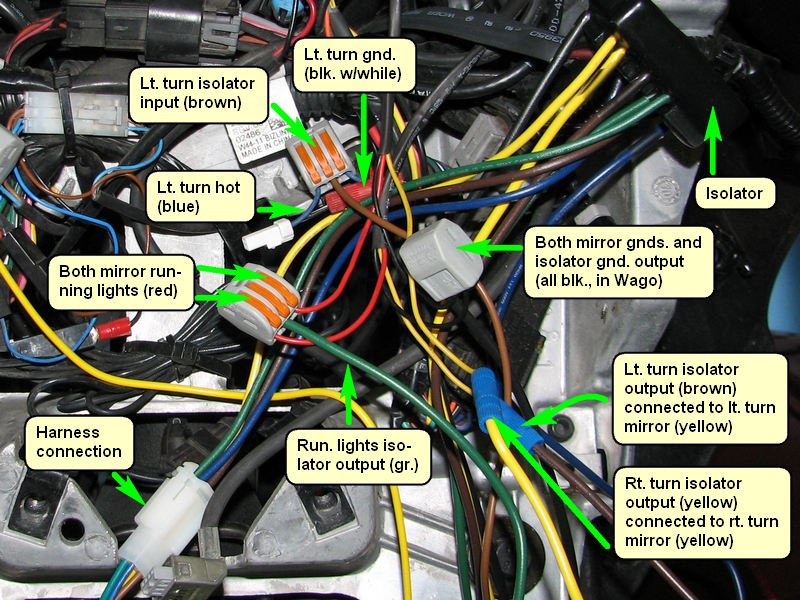Voltmeter, Fuse Panel, Connectors
FWIW, I've been farkling bikes for 20 years now, mostly making electrical changes, and this is what I can share:
Connectors:
Like
@Dave_J, I simply will not use Scotchlok and similar connectors; I won't use them even if they're included with products that I've purchased. And I don't even care for Posi-Taps, although they're much better (assuming you use the proper size, given the wire gauge in question).
Instead, I use either Posi-Locks or, more often, Wago clamp connectors. If you're not familiar with the latter, see
http://www.wago.us/products/termina...ectors/compact-splicing-connectors-for-all-conductor-types-222-series/overview/ . I have a bag of (originally) 50 of the three-gang version (
https://www.amazon.com/Wago-222-413-LEVER-NUTS-Conductor-Connectors/dp/B003K124UA/ ), and a smaller collection of the five-gang version.
If I have to tap into an existing wire (as opposed to connecting two wires together), I just snip that wire into two new ones. And then I add a third wire -- the one that was to be tapped into the original wire -- and put the three ends into a three-gang Wago.
Again, FWIW, I discuss these bad and good connectors in a very long write-up I did four+ years ago, for the Victory community, regarding adding some mirrors with LEDs in them. If anyone's interested, see
http://www.billanddot.com/adding-rivco-led-mirrors.html , and then scroll down about a quarter of the way, to a section titled "RECOMMENDATIONS OF ELECTRICAL CONNECTORS AND TOOLS."
Fuse Panels:
I've used a few different models over the years, and pretty much they're all good. In that same write-up about adding mirrors, I have a list, with links, of some of the more popular ones; this is near the bottom of the page, in a section titled "Fuse Panels?".
For my most recent such work -- this past spring, on a 2008 Exec -- I chose to buy Eastern Beaver's PC-8:
http://easternbeaver.com/Main/Wiring_Kits/Fuseboxes/PC-8/pc-8.html . Here's a pic of that work, in the Big Burger:
Voltmeters:
I've added voltmeters that had digital LCD readouts, multiple LED lights (the Kuryakin model), and a few others. Again, whatever works for you, as long as it's waterproof.
For that recent work on my latest Exec, I settled on the single LED SparkBright Eclipse8 voltage monitor:
http://www.sparkbright.co.uk/sparkright-eclipse-battery-voltage-monitor.php . Here's a pic of that one, installed (on the far right):
I like that one because of its space-saving installation, but if anyone feels that he or she would like more detailed information, then a single multi-color LED may not suit you.







